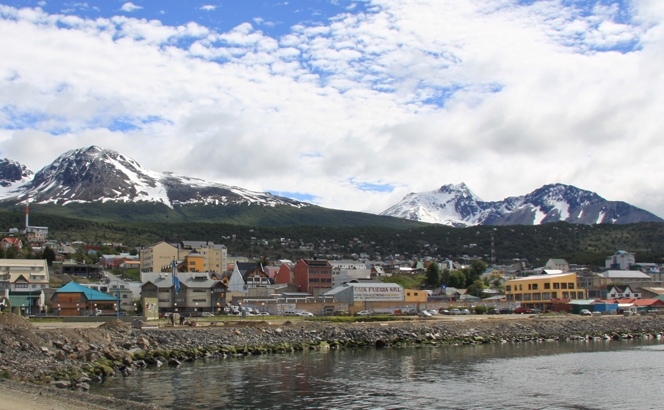
The hottest new job skills college graduates are bringing to the global job market are cross-cultural professional experience and fluency in a foreign language. Add a solid education in science, engineering, mathematics and technology to the résumé, and you have the ideal job candidate to fill key roles in today’s international companies and organizations.
Northern Arizona University’s Global Science and Engineering Program is doing just that to boost graduate employability by enhancing highly desirable STEM majors with foreign language skills and a yearlong professional experience abroad.
|
The program requires a five-year commitment from students, and the extra investment earns them two bachelor’s degrees, a certificate in International Science and Engineering, fluency in a second language and essential job skills.
Eck Doerry, computer science professor and the program’s director, calls it “a jewel in NAU’s crown” that establishes the university as a leader in STEM internationalization.
“NAU’s Global Science and Engineering Program is the cornerstone of our effort to develop a whole different kind of STEM workforce—one that is well-prepared to work in the modern global workplace upon graduation,” he said. “The idea is to not just increase the number of STEM graduates, but to develop a truly globally competent STEM workforce.”
After three years of foreign language study and courses in their chosen discipline, the program’s scholars spend their fourth year abroad, immersed in the culture of another country. That year begins at the partner university, with courses usually taught in their chosen foreign language that count toward graduation at NAU. Students spend the remainder of the year engaged in hands-on training in their field of study through a six-month research internship with a local company or research laboratory.
It is the only program in the United States to provide uniform, comprehensive internationalization tracks that span every STEM degree program on campus. Harvey Charles, vice provost for International Education, said it is one of the more significant and ambitious manifestations of the Global Learning Initiative at NAU.
“That science and engineering majors will experience from their very first semester and throughout their entire program of study, a coordinated and highly structured set of learning experiences that ensure they acquire the skills, knowledge and dispositions to be globally competent upon graduation is rare,” Charles said. “We are enormously pleased that NAU is providing national leadership in international STEM education.”
Students with training and experience in working professionally across linguistic and cultural boundaries are ready to contribute to global companies, a skill CEOs have told Doerry they are desperate to find in job candidates.
“We want these graduates to be able to compete for the top jobs,” Doerry said. “You can’t go wrong with a science and engineering career in general, but having this experience on your resume can make the difference between having a job and having the job you really want.”
A focus on efficiency in program design maximizes the cost-benefit for students and the university alike, weaving together existing degree programs, services and other existing infrastructure to create comprehensive, uniform international tracks spanning all of NAU’s STEM degree programs. Any full-time STEM major can enroll in the fee-free program.
NAU’s Global Science and Engineering Program launched in 2011 with 35 participants, and has nearly doubled in size every year. More than 130 students were enrolled in the program this fall, and it is expected to grow to 500 participants by 2016. The first cohort of students is currently abroad, split among Germany, Spain, Japan and France.



